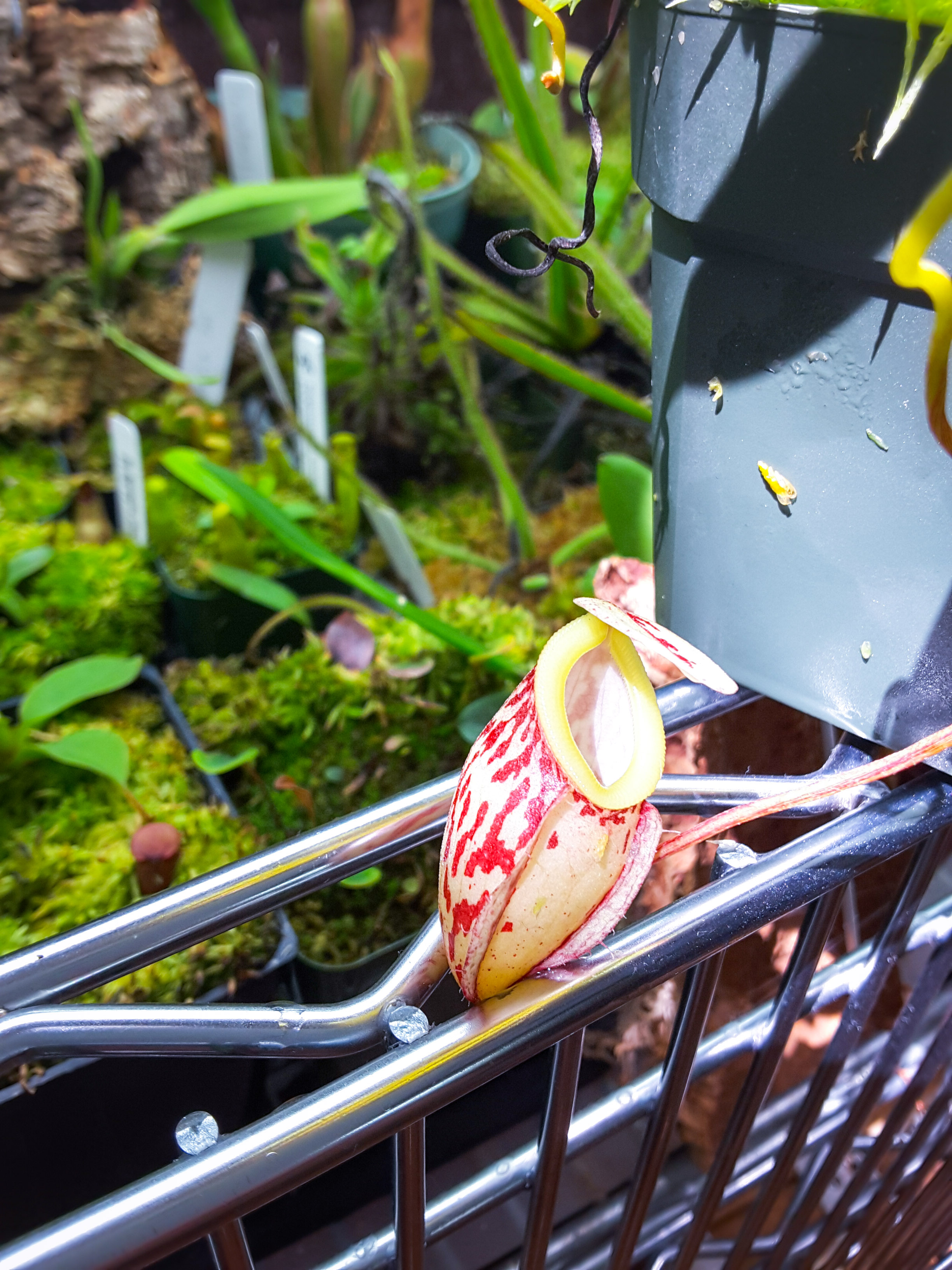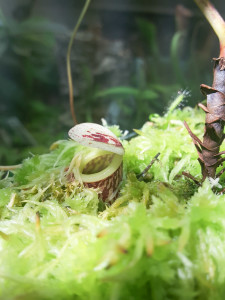
Nepenthes glabrata cultivation notes and care guide
Nepenthes glabrata in cultivation
Asian Pitcher plant species: Sulawesi, Indonesia
Elevation: 1600-2100 meters above sea level(~5249-6890 feet)
![Nepenthes glabarata (BE-3257) happy with cool it humid conditions in my highland terrarium [Photo: May 18, 2016]](https://youplants.com/wp-content/uploads/2016/05/Nepenthes-glabrata-may-18-2016-225x300.jpg)
Nepenthes glabarata (BE-3257) happy with cool it humid conditions in my highland terrarium [Photo: May 18, 2016]
Nepenthes glabrata is a small growing species found on the island on Sumatra in Indonesia. This species is highly regarded for its small, terrarium friendly size and its beautiful painted pitchers. Nepenthes glabrata is from high elevation in mossy cloud forest and in cultivation prefers very cool humid conditions. N. glabrata is found on p. 994 in Pitcher Plants of the Old World Volume Two by Stewart McPherson
The name come from the Latin word “glaber” or hairless and refers to the relative lack of indumentum or fur like hairs on the pitchers and leaves of the species. This species was formally described and entered cultivation around the same time as Nepenthes hamata and entered cultivation soon after.
Most Nepenthes glabrata that I have seen have nearly identical colors and shapes. The most noticeable variation is in size of the pitchers, and slighter variation between individual patterns of the markings.
I have noticed that N. glabrata seems to prefer a shadier position for the pitchers similiar to Nepenthes sibuyanensis and with very long tendrils it will bury its pitchers in moss, or behind the pots before oppening. Another interesting observation for this species is that the pitchers will come in wave, the plant will produce multiple leaves and tendrils and then open them in quick succession. This is something I have seen other species do, but most seem to produce pitchers one a time.
I especially like the small nature of the species, and I know that it is a favorite of the owners at California Carnivores because of its small terrarium friendly size. The plant will get tall when it vines however and would require room to go horizontal, or regular pruning in order to maintain in a terrarium long term. Is the parent of many great new hybrids, including my Nepenthes glabrata x aristolochioides.
Nepenthes glabrata Cultivation and Care Notes
- Appreciates higher humidity (not very surprising since it comes from the same cloud forests as Nepenthes hamata) I keep mine above 70% RH during the day and near full saturation (100%) during the evening.
- It’s possible to acclimate to lower humidity but it will take time and the plant will not grow optimally.
- Tissue Culture and Seed grown plants available from a variety of vendors.
- Moderately expensive for a plant that not particularly new to cultivation, $50 and up for small specimens
- My BE clones will not be happy without a signifigant night temperature drop, seed grown will depend on elevation where it is found 85F (29C) is ok during the day, but prefers nights below 60F (-16C)
If you want to learn more about cultivation of carnivorous plants, I highly recommend the comprehensive grow guide The Savage Garden, Revised: Cultivating Carnivorous Plants by Peter D,Amato. It is very easy to follow and reference and contains pictures and cultivation techniques for every genus of carnivorous plants.
If you want to learn more about Nepenthes glabrata or other pitcher plants, and see pictures of these spectacular species in the wild, I highly recommend reading Pitcher Plants of the Old World Volume One and Pitcher Plants of the Old World Volume Two
by Stewart McPherson it is over 1300 pages of exclusive pictures and notes from observation of habitats of nepenthes and cephalotus.
Find information about my Nepenthes glabrata hybrids here
More information available at Nepenthes glabrata wiki

![Nepenthes glabrata in the sun with its biggest pitcher so far. [Photo: May 18, 2016]](https://youplants.com/wp-content/uploads/2016/05/Nepenthes-glabrata-happy-in-the-sun-5-18-2016-225x300.jpg)
![Nepenthes glabrata upper pitchers at California Carnivores in Sebastopol, CA [Photo May 21, 2016]](https://youplants.com/wp-content/uploads/2016/05/Nepenthes-glabrata-upper-pitchers-at-California-Carnivores-225x300.jpg)
Recent Comments